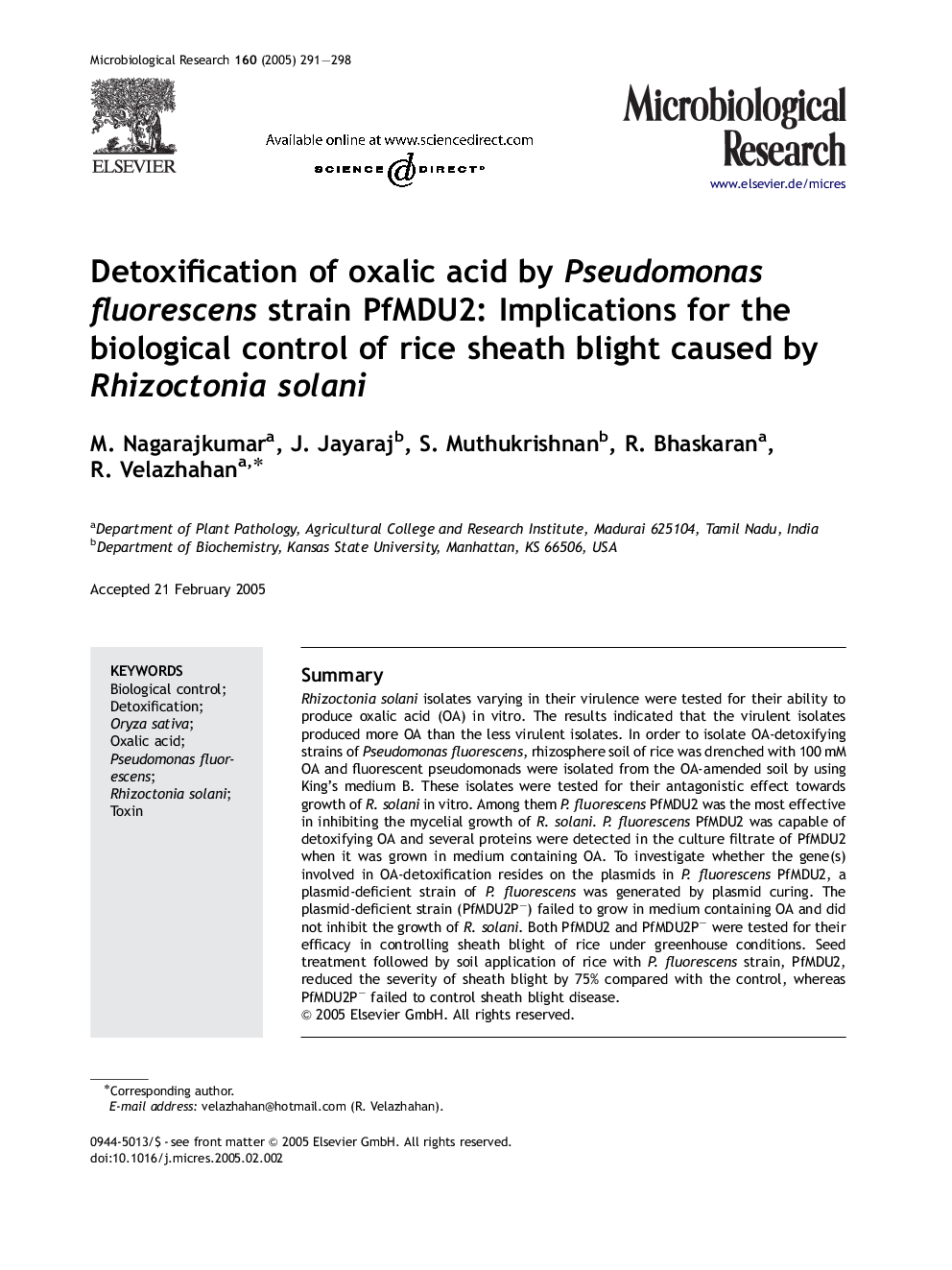| Article ID | Journal | Published Year | Pages | File Type |
|---|---|---|---|---|
| 10890784 | Microbiological Research | 2005 | 8 Pages |
Abstract
Rhizoctonia solani isolates varying in their virulence were tested for their ability to produce oxalic acid (OA) in vitro. The results indicated that the virulent isolates produced more OA than the less virulent isolates. In order to isolate OA-detoxifying strains of Pseudomonas fluorescens, rhizosphere soil of rice was drenched with 100Â mM OA and fluorescent pseudomonads were isolated from the OA-amended soil by using King's medium B. These isolates were tested for their antagonistic effect towards growth of R. solani in vitro. Among them P. fluorescens PfMDU2 was the most effective in inhibiting the mycelial growth of R. solani. P. fluorescens PfMDU2 was capable of detoxifying OA and several proteins were detected in the culture filtrate of PfMDU2 when it was grown in medium containing OA. To investigate whether the gene(s) involved in OA-detoxification resides on the plasmids in P. fluorescens PfMDU2, a plasmid-deficient strain of P. fluorescens was generated by plasmid curing. The plasmid-deficient strain (PfMDU2Pâ) failed to grow in medium containing OA and did not inhibit the growth of R. solani. Both PfMDU2 and PfMDU2Pâ were tested for their efficacy in controlling sheath blight of rice under greenhouse conditions. Seed treatment followed by soil application of rice with P. fluorescens strain, PfMDU2, reduced the severity of sheath blight by 75% compared with the control, whereas PfMDU2Pâ failed to control sheath blight disease.
Keywords
Related Topics
Life Sciences
Biochemistry, Genetics and Molecular Biology
Biotechnology
Authors
M. Nagarajkumar, J. Jayaraj, S. Muthukrishnan, R. Bhaskaran, R. Velazhahan,
